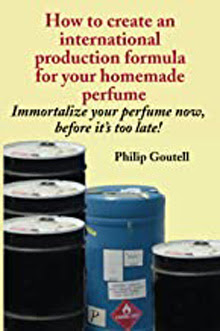How do YOU go about making a new perfume? Do you sketch out a plan, do you imagine a theme, or do you just plunge into it, mixing materials that seem to go together nicely? Do you find yourself creating many perfumes in small batches but never making the same perfume twice, even when everyone is asking you for it? To make more you need the formula.
There is a formula for every perfume you've ever made, even if you didn't record it. Perhaps the word "formula" is scary. Perhaps there's a fear that writing a few notes won't qualify as a formula and won't really be enough to bring the favorites you've made back to life again. But all it takes to bring a perfume of yours back to life in a new batch is incredibly simple, if you took a few important notes.
For example, say you created your fragrance using materials A, B, C, D, and E. Counting our drops, your initial formula might look something like this:
Then, if we were to assume that all the drops were of the same size (volume), we could go a step farther and produce a formula by percentages. It would look like this:
Now, to make more, you just mix the percentages. For example, to make 500 ml of your perfume oil:
When using your formula to produce more of your fragrance, you can use any unit of liquid measurement you want: milliliters, fluid ounces, liters, or even gallons. It's up to you.
If you have just made the original batch of your fragrance, nothing more need be done. But if some time has gone by, there is an issue you will have to deal with, being able to get more of the materials you used in your original batch. This brings up a second issue: keeping a record of the materials you used in your original fragrance.
If you are serious about your creative work in perfumery you will keep a very precise record of those materials including where you got them and even stock numbers. I've written a bit more about this in my book How to create an international production formula for your homemade perfume that will help you develop even more accurate formulas. The more accurate your formula is, the closer your new batch will be to your original. But it's never more complicated than just taking a few simple notes. You just want to be sure you're taking the right notes!





How small a volume can one comfortably aim for when fomulating? I'm trying not to waste (expensive) materials, but I get the feeling that 10mls is too low of a volume to really explore nuances. 500 ml like in the above example would quickly become expensive with some of the natural essential oils and absolutes. Advice for those of us on a budget?
ReplyDeleteTry 100 ml. If it's good, go to a larger number.
ReplyDelete